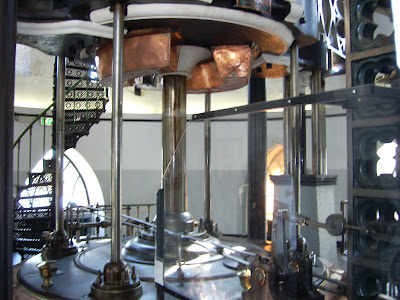 Spring break was upon us and one of the really nice aspects of studying in England is the ease with which one can travel internationally. And one of the really nice things about studying at St. Clares is that one is studying alongside of students from all over the world; instead of migrating to one of the American beachtowns, as is customary for spring breakers in the states, I chose to visit my good friend, Roderick ten Wolde, in his native land--I was Holland bound!
Spring break was upon us and one of the really nice aspects of studying in England is the ease with which one can travel internationally. And one of the really nice things about studying at St. Clares is that one is studying alongside of students from all over the world; instead of migrating to one of the American beachtowns, as is customary for spring breakers in the states, I chose to visit my good friend, Roderick ten Wolde, in his native land--I was Holland bound!My Dutch experience had really begun before I had even disembarked the plane. From the air I could see the massive windmills that dot the landscape and this beautiful barrage of colours that seemed to be painted on the soil in the richest hues of red, blue and violet. It wasn't until I got on the ground that I discovered that they were immense tulip farms, something for which Holland is quite famous.

 Roderick and his father, Wauter, met me at the airport and one of the first questions out of Wauter's mouth, behind only, "How was your flight," was "So what is it that you wish to see in Holland?"
Roderick and his father, Wauter, met me at the airport and one of the first questions out of Wauter's mouth, behind only, "How was your flight," was "So what is it that you wish to see in Holland?""I want to experience Dutch culture," I responded and before we had even reached the ten Woldes' residence, we were at the Museum De Cruquius and I was learning the history of the land.
Since the Middle ages, Lake Haarlem (Haarlemmermeer) had been continually expanding and, by the early 1800s, it had expanded to the point of threatening the lands of northeastern Holland, including Amsterdam. The Dutch were faced with a grave decision: either move the cities or move the water. The Dutch, of course, chose the latter, but it is important to realise that this is almost half a century before electricity had been effectively harnessed and there simply wasn't enough land to build enough windmills to move this quantity of water. The solution: the Dutch built the pumping stations of Leeghwater, Lynden and Cruquius, housing the world's largest steam engine (seen below); within three years the lake was dry.

 The Dutch take great pride in this incredible feat of land reclamation. The city of Amsterdam and, in fact, approx. one third of the entire Netherlands would now be underwater had it not been for the Dutch perserverance and ingenuity in building these pumping stations. And the excess water that once threatened the country's very existence has been drained into the canals that make the The Netherlands one of the most beautiful countries in the world.
The Dutch take great pride in this incredible feat of land reclamation. The city of Amsterdam and, in fact, approx. one third of the entire Netherlands would now be underwater had it not been for the Dutch perserverance and ingenuity in building these pumping stations. And the excess water that once threatened the country's very existence has been drained into the canals that make the The Netherlands one of the most beautiful countries in the world.